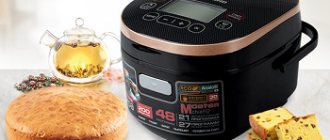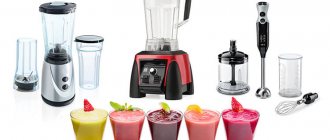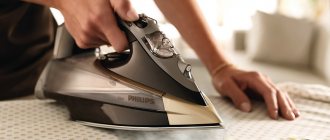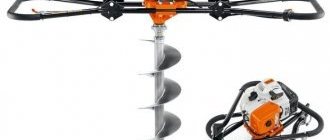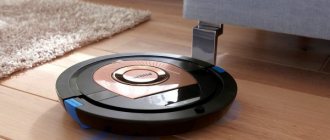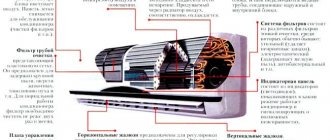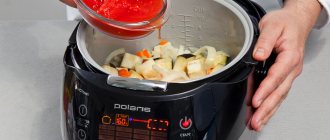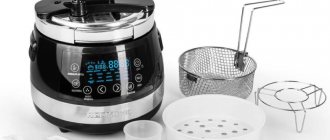Hearing the word “pressure cooker”, someone may raise their eyebrows in surprise and ask: “What is that?” Others nod with understanding: “Oh, yes, of course, my grandmother cooked cabbage soup in it!” And to be fair, it is not at all clear why this convenient and functional kitchen device turned out to be almost forgotten and not so in demand today.
For centuries, humanity has been striving to reduce the time spent on cooking.
What is a pressure cooker and how does it work?
To begin with, a small educational program. A pressure cooker is no different in appearance from a large saucepan. Its whole feature lies in the lid. The latter has the ability to fit very tightly to the container due to a special rubber seal. By placing the pressure cooker on the stove, you raise the temperature inside, thereby speeding up the cooking process.
A pressure cooker is perfect for those who often go on diets and adhere to a healthy diet.
When the lid is tightly closed and the stove is heated to maximum, steam is formed inside, which increases the pressure in the pressure cooker. And the temperature inside rises from 100 to 121 degrees Celsius.
When the maximum pressure is reached (usually this moment is determined using a special sensor or a pop-up rod), the outlet valve opens and excess steam escapes, maintaining the maximum possible temperature inside this unusual pan.
The main feature of a pressure cooker is the reduction of cooking time.
It is worth noting that Soviet-era models for gas stoves also worked on the same principle. As they say, the new is the well forgotten old. By the way, it is these models of the last century that are distinguished by long-term operation. They may not have a very aesthetic appearance, but in terms of their performance characteristics they will give a head start to any modern unit.
There are also electric models that provide the ability to automatically adjust the temperature and pressure levels. Such devices are great for soaking grains or legumes.
With the help of such a household appliance, you can save more than 70% of nutrients.
Modern pressure cookers have special grates (or grids) on which food is placed. It is better to lay them out in such a way that they do not touch each other and are evenly steamed. Such nets are placed above the water, at a distance of at least 2 centimeters. This allows evaporation to occur and creates the necessary vapor pressure.
Describing the principle of operation of a pressure cooker in a nutshell, we can say that it is fast, tasty and as healthy as possible.
Much less air accumulates in a pressure cooker, which oxidizes food, than in a simple saucepan.
Pressure cookers - instructions for use
Pressure cooker instructions.
Thank you for choosing a BergHOFF pressure cooker. To ensure safety and long life, all BergHOFF pressure cookers are thoroughly tested at all stages of production and are manufactured to extremely high standards using the best materials available.
Proper care of your pressure cooker will ensure a long service life. Please read these instructions carefully. The manual provides guidelines for the optimal use and care of your new pressure cooker, as well as some tips for cooking healthy foods.
1.GENERAL DESCRIPTION
The BergHOFF® pressure cooker is designed taking into account the wishes of the most demanding customers.
The kit includes:
1. Body 2. Cover 3. Bottom long handle 4. Top long handle 5. Side handle 6. Pressure valve 7. Switch (for opening/closing) 8. Rubber ring 9. Safety hole 10. Safety valve 11. Six-layer bottom 12 .Locking device
IMPORTANT SAFETY PRECAUTIONS!
• Read the instructions completely.
• Keep children and animals away from the pressure cooker while it is in operation.
• Never leave the pressure cooker unattended.
• Do not place the pressure cooker in a heated oven.
• When moving the pressure cooker while it is under pressure, move with extreme caution. Do not touch hot surfaces, use handles. If necessary, use gloves.
• Do not use the pressure cooker for purposes other than those for which it is intended.
• This appliance operates under pressure and can therefore cause scalding if used incorrectly. Before you start heating the pressure cooker, make sure that the device is properly closed. Please see chapter "Instructions for use".
• Never force the pressure cooker to open. Do not open until the pressure inside the steamer has completely dropped. Please see "Instructions for Use".
• Never use the pressure cooker without water or liquid as this will cause serious damage to the appliance.
• Do not fill the pressure cooker more than 2/3 full. When cooking food that expands during cooking, such as rice or dehydrated vegetables, do not fill the pressure cooker more than halfway (1/2).
• After cooking skin-on meats (such as beef tongue or chicken), which can accumulate water under the skin under pressure, do not pierce the meat until the swelling of the skin has gone away; you may be scalded.
• When cooking thick foods (which may foam), shake the cooker lightly before opening the lid to prevent food from escaping (and scalding).
• Before each use, check that the valves are not clogged.
• Please see the chapter “Instructions for use”.
• Never use the pressure cooker for deep frying in oil under pressure or adding fat to dough.
• Do not solder any safety systems. Please see "Instructions for Use".
• Use only original spare parts according to the model.
• Always use the same manufacturer's body and cover, which are compatible, according to the instructions.
• Always keep these instructions handy!
USER MANUAL
Before using the pressure cooker for the first time, remove all labels! Wash the pan, lid and rubber ring with a mild detergent, rinse well and dry thoroughly.
3.1. Opening the pressure cooker (D - E - F)
With the switch in the appropriate position, turn the top handle to the right while holding the bottom handle with your left hand. Remove the cover when the mark on the cover is at the center of the left handle.
Shake the pressure cooker before opening the lid to level the level.
content.
3.2. Closing the pressure cooker (D - E - F)
Before closing the pressure cooker, check that the entire surface of the safety valve and pressure valve are clean. Place the ring exactly along the rim of the lid.
Remove the cover when the mark (on the cover) is at the center of the left handle. Press down lightly on the cover with your left hand, and with your right hand, rotate the top handle horizontally to the left until it is positioned directly above the bottom handle and no further rotation is possible. Now pull the switch towards you to move it to the closed position.
3.3. Cooking food
Place the pressure cooker on a heat source. It is necessary to add a minimum amount of water or any other liquid to create steam. But never fill the pressure cooker more than 2/3 full. When cooking food that produces foam during cooking, do not fill the pressure cooker more than halfway.
This is recommended when preparing soups, vegetables, chickpeas, etc. Avoid complete evaporation of the liquid.
When cooking food with gas, it is necessary to control the flame from the very beginning of cooking so that it does not spread beyond the bottom of the pressure cooker. Therefore, it is important to ensure that the pressure cooker is centered on the gas burner, which saves energy and prevents the handles and rubber ring from getting burned.
When lifting the control valve to release a stream of steam, reduce the heat intensity so that a small amount of steam is constantly coming out of the pressure cooker. In this way, food is cooked perfectly and nutrients such as vitamins, minerals and flavors are preserved as much as possible. If the pressure valve stops releasing steam during cooking, turn up the heat. If the valve produces too much steam, reduce the heat. During cooking, it is normal for water to escape through the safety valve.
a small amount of steam.
Once cooking is complete, open the pressure cooker as follows:
• remove the pressure cooker from the stove.
• Place the pressure cooker in the sink (under the tap) and cool with cold water. Never immerse the pressure cooker in water
• When the pressure cooker has cooled down, carefully turn the switch to the “open” position and open the pressure cooker (G).
• Do not attempt to open the pressure cooker while it is hot or while steam is escaping from the pressure valve.
3.4. Five independent security systems
• Once the operating pressure reaches 80kPa / 11.60 PSI, the pressure valve regulates the internal pressure and releases steam.
• A safety valve located under the top handle prevents any further increase in excess pressure. If the internal pressure exceeds 160 kPa / 23.20 PSI, the automatic steam release system is activated.
• The locking device automatically checks the internal pressure.
• The pressure cooker cannot be opened if the pressure exceeds 2 kPa/0.29 PSI. If the locking device is activated, the lid cannot be opened as long as pressure remains inside the pressure cooker.
• If, for any reason, the first pressure valve does not function and the pressure in the pressure cooker increases, the rubber ring around the perimeter of the lid contracts, allowing excess steam to escape and allowing the pressure to decrease).
• Pressure does not build up until the cap and switch are installed correctly.
PRACTICAL TIPS
If you notice that the pressure valve does not rise, it is possible that:
• the switch is not set to the “closed” position.
• there is not enough liquid in the pressure cooker. Check the amount of liquid in the pressure cooker and add the required amount.
• The rubber ring is dirty or damaged. Clean or replace it.
• Pressure cooker temperature is too low; increase heat.
If you notice steam escaping from the edges of the lid, there may be a problem.
following:
• The steamer is not closed properly. Check that the pressure cooker is closed properly.
• The rubber ring is not installed correctly or is damaged. Remove the ring and install it correctly or replace it.
If the safety valve is activated during cooking:
• Remove the pressure cooker from the stove, cool and open.
• Remove the valve and check whether the hole under the pressure valve is clogged. If the hole is clogged, clean it thoroughly.
• Return the valve to its place, close the pressure cooker and continue cooking.
• If the safety valve operates a second time, stop the cooking process.
• If the rubber ring located around the rim of the lid does not fulfill its function before the safety valve is activated, stop the cooking process immediately.
Do not attempt to modify any parts or attempt to assemble them in a manner other than that specified. Use only original spare parts (they can be
purchase from your local sales agent).
CLEANING AND CARE
5.1. Lid
• Always clean the cover by hand (use a soft sponge or cloth); never put it in the dishwasher
• Before each use, make sure that the outlet is not clogged with food particles or other materials.
• There is no need to clean the valves every time after using the pressure cooker; clean them periodically as they become dirty
• Wash (and rinse) the rubber ring with warm water or a mild detergent after each use. Dry it and return it to its place.
• If you do not intend to use the pressure cooker for a long time, the ring should be stored separately. To ensure reliable operation of the pressure cooker, replace the ring annually. Helpful Hints: Apply a little oil to the rubber ring. This will extend the life of the ring and improve its performance.
5.2. Frame
• To keep your pressure cooker looking like new, we recommend washing it with warm water and a mild detergent after each use. Use a soft sponge or cloth; Abrasive cleaners or steel wool may damage the polished surface of the product. Dry the pressure cooker thoroughly after use. The pressure cooker body can also be washed in the dishwasher.
• Occasionally, depending on the type of food being cooked and the lime content of the water used, stains or marks may appear, but these will not affect the performance/function of the appliance. If you clean the body with vinegar, all stains will disappear (you can also use “BergHOFF's magic for stainless steel!” Never leave bleach (even a solution) or tomato sauce in the pressure cooker... for a long time to avoid rust formation.
• If you do not intend to use the pressure cooker for a long time, please clean the body and lid and store them dry. It is also important to prevent the body and cover from hitting each other to prevent deformation of both components.
• After use, it is recommended to store the pressure cooker with the lid closed to avoid deformation of the rubber ring.
COOKING TIPS
• Dried vegetables such as peas, beans... should be wetted before cooking.
• There is no need to defrost frozen vegetables or small fish. If you are cooking large frozen fish or meat, increase the cooking time slightly.
• Soups that produce a lot of foam during cooking (for example, pea soup) should be cooked first with the lid open, and then strained before starting pressure cooking.
• Brown the meat well, even a little more than usual, as cooking meat in a pressure cooker may cause a slight loss of color. Cooking time depends on the thickness and type of meat.
• Clean the fish thoroughly. Sprinkle with a little lemon juice and salt immediately after cooking.
COOKING TIME
• BergHOFF Worldwide cookware can be used on induction, electric, gas, halogen... stoves.
• Cooking times are calculated by starting with sufficient steam release and a natural release of pressure in the pressure cooker.
• Suggested cooking times are for reference only and may vary due to factors such as quantity of food, heat source...
TECHNICAL CHARACTERISTICS AND SAFETY REQUIREMENTS
• Capacity and nominal diameter: 22 cm 3.1 l 22 cm 7.3 l
• Material: stainless steel 18/10
• Safety when opening the lid: the pressure cooker remains closed if the internal pressure exceeds 5 kPa/0.73 PSI
• Safety when closing the lid: The pressure should not exceed 5kPa / 0.73PSI if the closed lid is not in the correct position.
Advantages and disadvantages
The advantages of this device are obvious. When there is a catastrophic lack of time and total workload, a pressure cooker will solve the problem of a quick and tasty lunch or dinner. According to some estimates, with its help you can cook 70% faster than in a regular pan. At the same time, it requires less energy for cooking (about 50-70%).
The appearance and taste of the dish remains at a high level.
Another indisputable advantage is a greater amount of useful vitamins and microelements that are preserved during the cooking process in a pressure cooker. After all, cooking requires less water, which means that useful elements are not diluted, but are preserved in the state necessary for a person.
You can cook any food in a kitchen container, including desserts. It is also allowed to defrost meat and vegetables.
Finally, because food is cooked very quickly in a pressure cooker, food retains its color and, as a result, soups, side dishes and meat dishes are more attractive in appearance.
There are also disadvantages, which, however, is not surprising, since the perfect kitchen gadget has not yet been invented! First of all, you will have to figure out how to use a pressure cooker first. And at the next stage you will need to get a little accustomed to the unusual process. But then, rest assured, everything will go like clockwork.
Dishes can be steamed without adding water to the container.
In particular, it will be necessary to re-determine the amount of liquid. It is clear that you will need much less of it than for cooking in a regular pan, but too little water is bad. The food will burn to the bottom.
Another nuance is control over the degree of readiness. With an ordinary saucepan everything is clear: I lifted the lid and assessed the process. And when cooking in a pressure cooker, you need to take into account that at maximum pressure the lid is locked (this is necessary for safety). To open the lid, you first need to release the pressure and then open it. All this takes time.
A distinctive feature is the operating principle of the pressure cooker.
Finally, because the process happens faster than in a saucepan, even a few extra minutes will result in the dish being overcooked.
And yet, you must admit, the disadvantages of a pressure cooker are rather conventions that can be resolved by simply getting used to using this device.
The container is equipped with a tight lid and, when preparing various dishes, it is firmly fixed to the product.
Multicooker or pressure cooker: comparative analysis
A multicooker is an amazing device with many different functions. Some rightfully believe that it is a worthy descendant of the pressure cooker. Let's try to figure it out.
A multicooker or pressure cooker has been decorating more than one kitchen for several years now.
The name itself eloquently indicates that a multicooker is a multi-functional specialist: it can cook, stew, fry, and bake. The indisputable advantage of this device is that it is capable of automatically controlling the process and does not require human intervention after all the products have been added and a certain mode has been selected.
Their appearance, and most importantly, their help in cooking, has become an undeniable advantage when choosing between buying a multicooker or a set of frying pans.
The multicooker also has the ability to heat up and maintain a set temperature for a certain time.
The delayed start function allows you to prepare lunch or dinner exactly at the specified time. During the cooking process, healthy elements are preserved in dishes.
Slight heating of the case indicates the safety of this device.
Mentioning the shortcomings, we note the following:
- High price (especially if you are looking for a model with many features);
- Low cooking speed.
Comparing the advantages and disadvantages of both devices, the fact is obvious: the answer to the question of what to choose depends on your specific needs.
To diversify the number of dishes, you can find many interesting and new recipes on the Internet.
For example, if you prioritize safety (perhaps because there are small children in the apartment), then a multicooker is undoubtedly the best choice. In addition, a multicooker will allow you to experiment with recipes and available programs.
If the main thing for you is to quickly prepare dinner or lunch, then, of course, a pressure cooker will cope with this task much better.
To clean stains from your slow cooker, sprinkle the bottom of the container with baking soda and add a small amount of white vinegar. After some time, wash with warm water and soap.
What is better to cook in a pressure cooker?
Of course, in the time of our grandparents, the issue of preserving nutrients in products during cooking was not so pressing. Therefore, in many families, pressure cookers were used literally mercilessly. They stewed potatoes, cooked cabbage soup and other delicacies in them.
Most models are characterized by the presence of grates or meshes where products are placed.
However, the peculiarity of the “production process” - heating under pressure - indicates that it is best to cook soups or stews in a pressure cooker. Ideal foods for this device are legumes, whole grains, and a variety of cereals. Firm vegetables such as beets or carrots are also suitable.
It is thanks to pressure, which plays a major role in the cooking process, that the beneficial properties of these products are revealed, as they say, “in all their glory” and nourish our body with not just healthy, but also delicious dishes.
Meat, fish and vegetables should be placed in such a way that they are not close to each other.
For example, to cook chickpeas or beans in a regular pan, you will have to spend more than an hour. And the pressure cooker will do this for you within 20 minutes. As they say, feel the difference!
Or, every housewife is familiar with the situation when you want to make a vinaigrette, but because the beets take a long time to cook, you have to postpone preparing your favorite dish until the weekend. And in a pressure cooker, beets will cook in a matter of minutes.
It is important that the steam is evenly distributed and the dish is processed efficiently.
Even aromatic broth from fresh beef can be cooked in an hour. And you don’t have to stand at the stove for half a day and control this process.
Temperature during cooking
As already noted, the operating principle of the device is based on the effect of pressure inside the pan on the temperature. As the pressure increases, the temperature increases accordingly, which speeds up the immediate cooking process. Most housewives who use a miracle pan in their kitchen do not even think about the question of what temperature is in the pressure cooker during cooking. But such knowledge will be useful, because knowing the temperature, it is much easier to determine the right time that will be required for cooking.
As already noted, most models most often use two main pressure modes. Accordingly, there will be 2 temperature modes.
- At 0.3 bar, the thermometer scale will show about 109 C. This mode of operation is the most gentle and is suitable for cooking a wide range of products.
- The second mode significantly speeds up the cooking process, especially meat. At 0.7 bar it allows you to achieve 116 C.
How to reduce blood pressure
Experienced housewives claim that your ability to reduce pressure in a pressure cooker is the key to success in preparing tasty and healthy dishes.
You can do this in three ways:
- Natural reduction occurs due to turning off heat (gas or electricity);
- You can artificially reduce the pressure by placing the pan under running cold water;
- A quick reduction is possible if you open a special valve on the lid of the pressure cooker.
Often, vegetables and beans are cooked in such a container, since it takes a lot of time to cook them in a saucepan.
Natural pressure reduction is not a quick process. It takes from 5 to 20 minutes. This period depends on the amount of ingredients and their density. An important nuance: with prolonged cooling, meat or fish, as well as legumes, only become tastier, but vegetable stews quickly turn into porridge and lose their taste.
The main thing is to choose the right recipe and cook according to the algorithm.
Cold water and a special valve are an ideal way to reduce pressure while cooking grains and vegetables. This is a kind of “first aid” to reduce blood pressure and stop the cooking process.
The secret to a delicious pressure cooker dish is an accurate recipe and equally accurate cooking time. Then you can be sure that your culinary masterpiece will be appreciated.
It is recommended to clean the product and its components manually without using hard sponges or brushes.
Important! Before cooking in the pressure cooker, please read the operating instructions carefully. At first glance, this is a truism, but, you see, not every housewife bothers herself with such reading material. But in vain. There are nuances that distinguish pressure cooker models, and it is these that are very important to take into account when operating a particular device.
What to look for when choosing
To understand how to choose a multicooker-pressure cooker correctly, it is important to study not only its differences from a model without a pressure generator, but also take into account a number of other parameters that will be useful during operation of the device. In order for the device to meet all expectations, you need to pay attention to:
- bowl volume. The internal container must be selected with the condition that all products are stacked in a heap. Therefore, it is necessary to choose a bowl with a capacity of 1 liter. For this parameter, you also need to focus on the number of family members for whom you plan to cook. For 1-2 people you will need a bowl with a volume of 3-5 liters, for a family of 3-4 members you will need a volume of 6-8 liters;
- location of heating elements. In multicookers-pressure cookers that belong to the economy class, in 90% of cases they are located only at the bottom (under the bowl). Accordingly, it will be difficult to cook baked goods or roasts in such models. To expand the cooking possibilities and improve the quality of ready-made dishes, it is recommended to choose appliances where the heating elements are also located in the lid;
- the presence of a 3D or telecoil function. These innovations will ensure even heating of products and dishes;
- indicators of the weight and dimensions of the device are an important parameter for those who often take a multicooker to the country or have a small kitchen;
- body material. Plastic is inexpensive, does not require special care, is easy to clean, but lasts less. It is recommended to give preference to stainless steel. This case looks more stylish, it is stronger and more durable in use. However, it is worth understanding that along with this the weight of the device and its price increase;
- the presence of an external moisture collector, which will allow you to collect condensed steam when opening the lid. This element is important for those who plan to cook pies and other baked goods in a slow cooker.
Among the differences that should be taken into account when choosing is the functionality of the multi-pressure cooker. In 90% of cases, the device contains 8-12 automatic programs and 10-12 additional modes. The “Multi-cook” function expands the cooking capabilities (you can set individual temperature and time settings manually).
Ideally, the device should have the following set of functions:
- delayed start;
- timer;
- pressure regulation;
- protection from children;
- presence of a removable cover;
- sound signal after the end of cooking;
- heating.
An important parameter is simple operation and a clear interface. Also, according to the advice of experts, a multicooker or 2-in-1 pressure cooker should be economical in energy consumption. The optimal indicator of energy consumption of equipment is 500-1500 W.
In 90% of cases, the bowls of the device have a non-stick coating made by Teflon spraying, but in some models the internal container can be made of ceramics or ferritic steel. When deciding which multicooker to choose, you should understand the disadvantages of each material. In the first case, you will have to stock up on wooden spoons and spatulas, because when interacting with metal utensils, scratches and cracks will instantly form on the non-stick coating. The ceramic bowl cannot be washed in the dishwasher to avoid damaging the material. Ferritic steel is highly susceptible to corrosion.
Before first use, be sure to read the operating instructions, since different models may have individual features of use in terms of functions and programs, as well as safety precautions.
Rules of care
To ensure that your pressure cooker does not turn out to be a disposable gadget, but serves you for many years, take into account simple tips for caring for it.
- Allow the pressure cooker to cool before cleaning;
- Use the container only on the hob. Do not reheat or cook in the microwave or oven;
- Wash only by hand and only with soft sponges. No metal brushes!
- When cooking in a pressure cooker, do not overdo it with vegetable oil. A very small amount is enough;
- Only start cleaning the device when there is no food left in it.
An electric pressure cooker requires the same maintenance methods as a standard one.
The care rules are the same for modern pressure cookers and for Soviet-style models.
And a few more important points:
- Before you start cooking, make sure the pressure valve is clean and free of food residue. If you find them, remove them with a toothpick;
- The rubberized gasket on the cover must be undamaged. If this is not the case in your case, you will not be able to close the lid tightly, which means the cooking technology will be disrupted. It is worth replacing with a new component;
- During washing, the temperature should increase gradually (since you should only start washing a cooled device). Temperature fluctuations negatively affect the condition and performance of the pressure cooker;
- Remove remaining food only after the appliance has cooled completely.
Before use, make sure that there are no food residues inside the vessel.
Be careful to ensure that the pressure cooker does not have any chips or cracks through which steam may escape. Not only will this disrupt the cooking process, you risk serious burns. So this point deserves the most serious attention.
The pressure cooker is undoubtedly a worthy invention. We can safely say that it has stood the test of time and proven its worth, even in competition with modern multicookers and double boilers. Decent in all respects and capable of many things, the pressure cooker deserves to take its place in your kitchen.
By following the above mentioned maintenance methods, you will be able to use your pressure cooker for many years.
